Spread Of Christianity
The spread of Christianity is a historical process that unfolded over several centuries, beginning in the 1st century CE in the Roman province of Judea. Initially propelled by the efforts of Jesus’ disciples and early followers, Christianity gained traction through missionary activities, notably those of the Apostle Paul, who played a pivotal role in disseminating Christian teachings throughout the Roman Empire and beyond.
The Roman Empire played a significant role in the expansion of Christianity. The conversion of Emperor Constantine in the 4th century CE marked a turning point, leading to the Edict of Milan in 313 CE, which granted tolerance to all religions, including Christianity. This newfound acceptance allowed Christianity to flourish within the Roman Empire.
In 380 AD, Theodosius I proclaimed the Edict of Thessalonica and Christianity was officially established as the state religion of the Roman Empire.
As Christianity became distanced from its Jewish origins, it began to include elements of other cultures and forms of thinking.
Christian missionaries, both within and outside the Roman Empire, contributed significantly to the spread of the faith. Figures such as St. Patrick in Ireland, St. Augustine in England, and St. Cyril and St. Methodius in Eastern Europe played crucial roles in extending the reach of Christianity.
How Christianity emerged and spread during the early Roman Empire
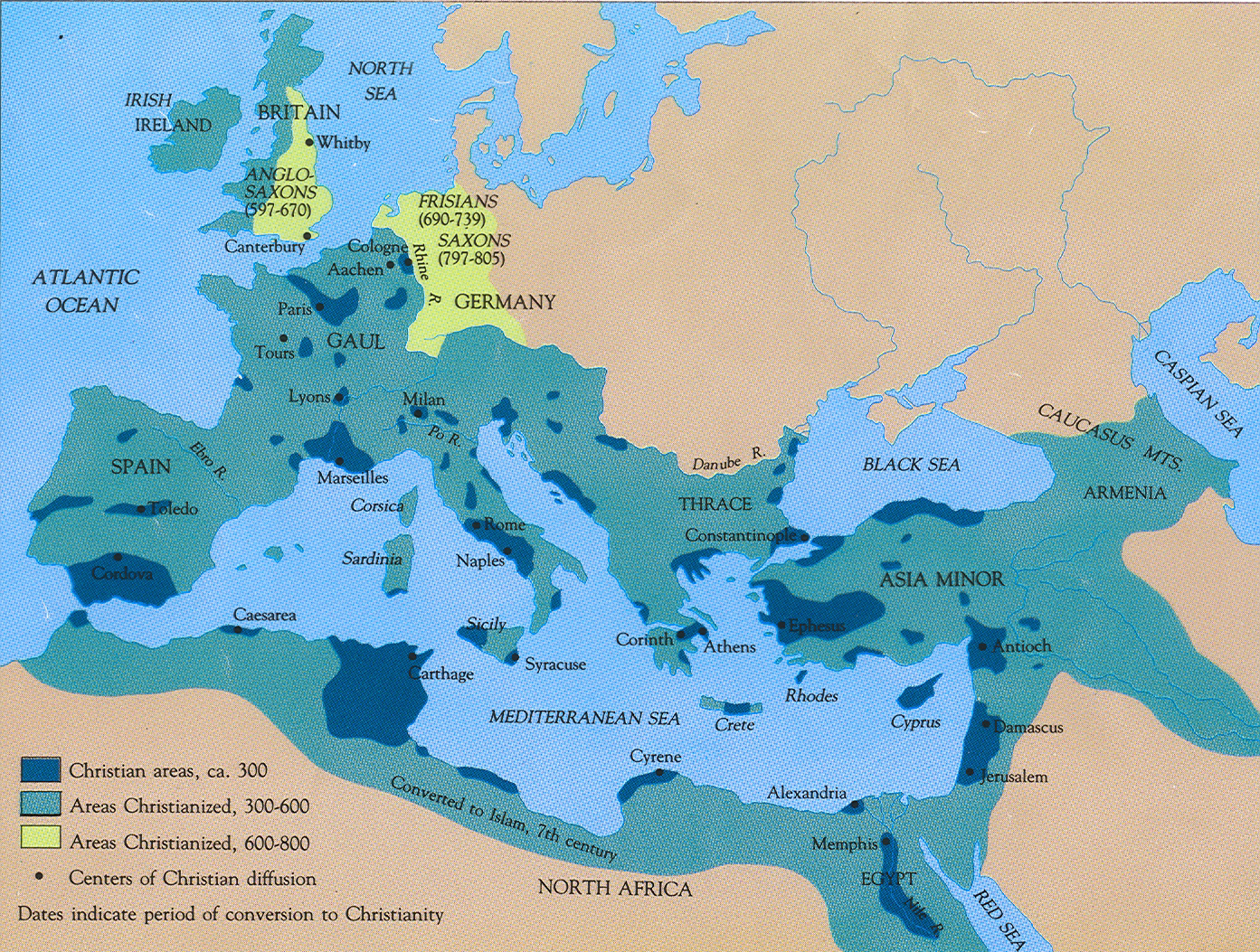
The Byzantine Empire, with its capital in Constantinople, emerged as a stronghold of Christianity, particularly in the Eastern Orthodox tradition. As Christianity spread eastward, it reached regions such as Persia, India, and eventually China through trade routes and missionary endeavors.
Over time, doctrinal differences led to schisms within Christianity, resulting in the establishment of major branches such as the Roman Catholic Church, the Eastern Orthodox Church, and various Protestant denominations.
In the beginning Middle Ages, missionary movements spread Christianity amongst German peoples. Throughout the High Medieval Period, eastern and western Christianity drifted apart, which leads to the East-West Schism of 1054. Growing criticism of the Roman Catholic behaviour started to the Protestant movement of the 16th century and the separation of western Christianity.
Throughout the Middle Ages, Christianity played a central role in European culture, politics, and society. Monasteries became centers of learning, and the Church wielded significant influence.
Since the Renaissance period, with western colonialism, Christianity has extended everywhere in the world. Now there are more than 2.4 billion Christians worldwide, and Christianity has become the most successful religion in human history. The last century Christianity quickly spread in Eastern Asia (China and South Korea) and sub-Saharian Africa.
The world map below created by Reddit user PanzerMan shows spread of Christianity Worldwide.
Spread Of Christianity Worldwide (33-2000 A.D.)
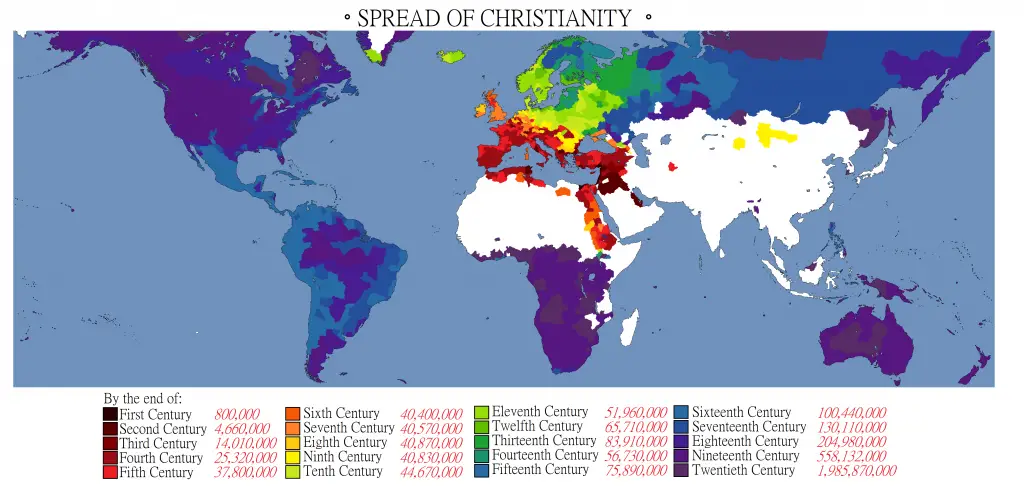
Today, Christianity is a global religion with followers on every continent. It encompasses diverse denominations, including Catholicism, Protestantism, Eastern Orthodoxy, and various independent Christian movements.
If you’re interested in delving deeper into Christianity, we recommend exploring the following books.


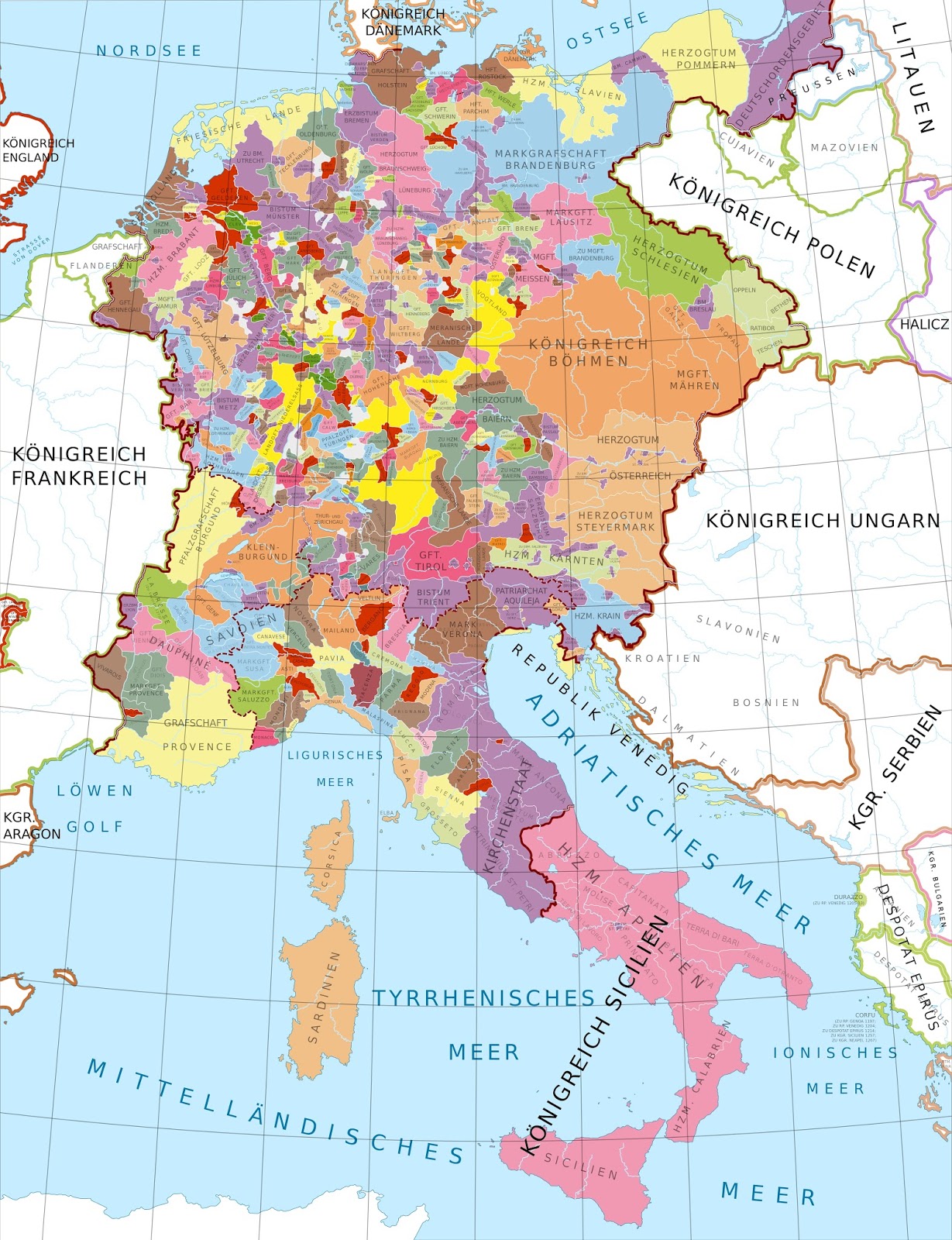
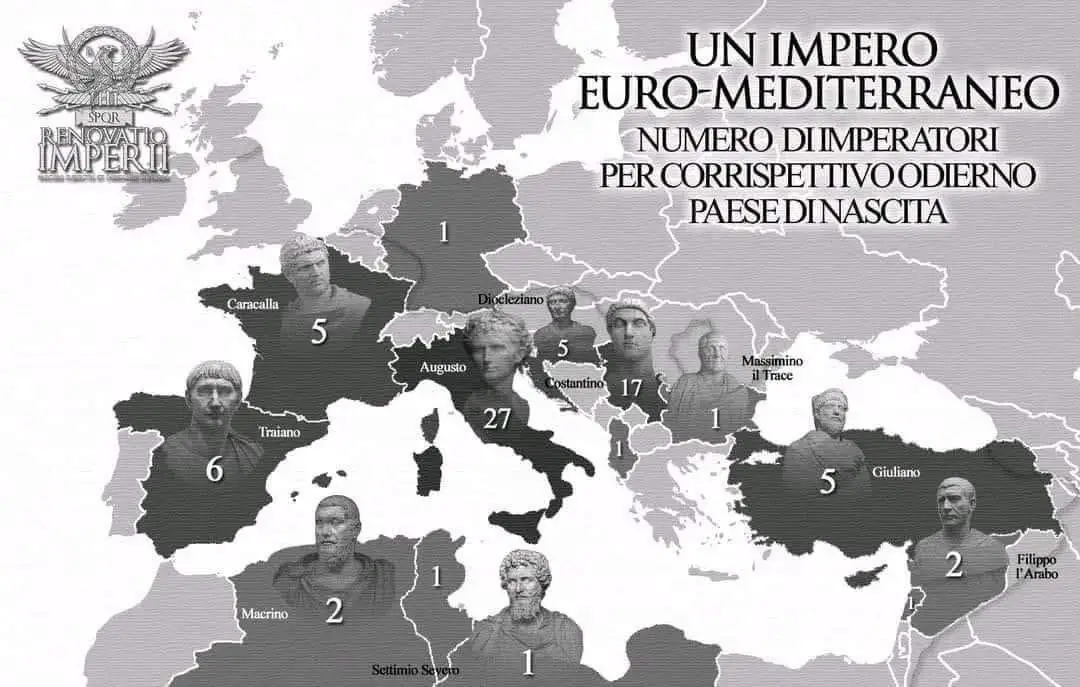



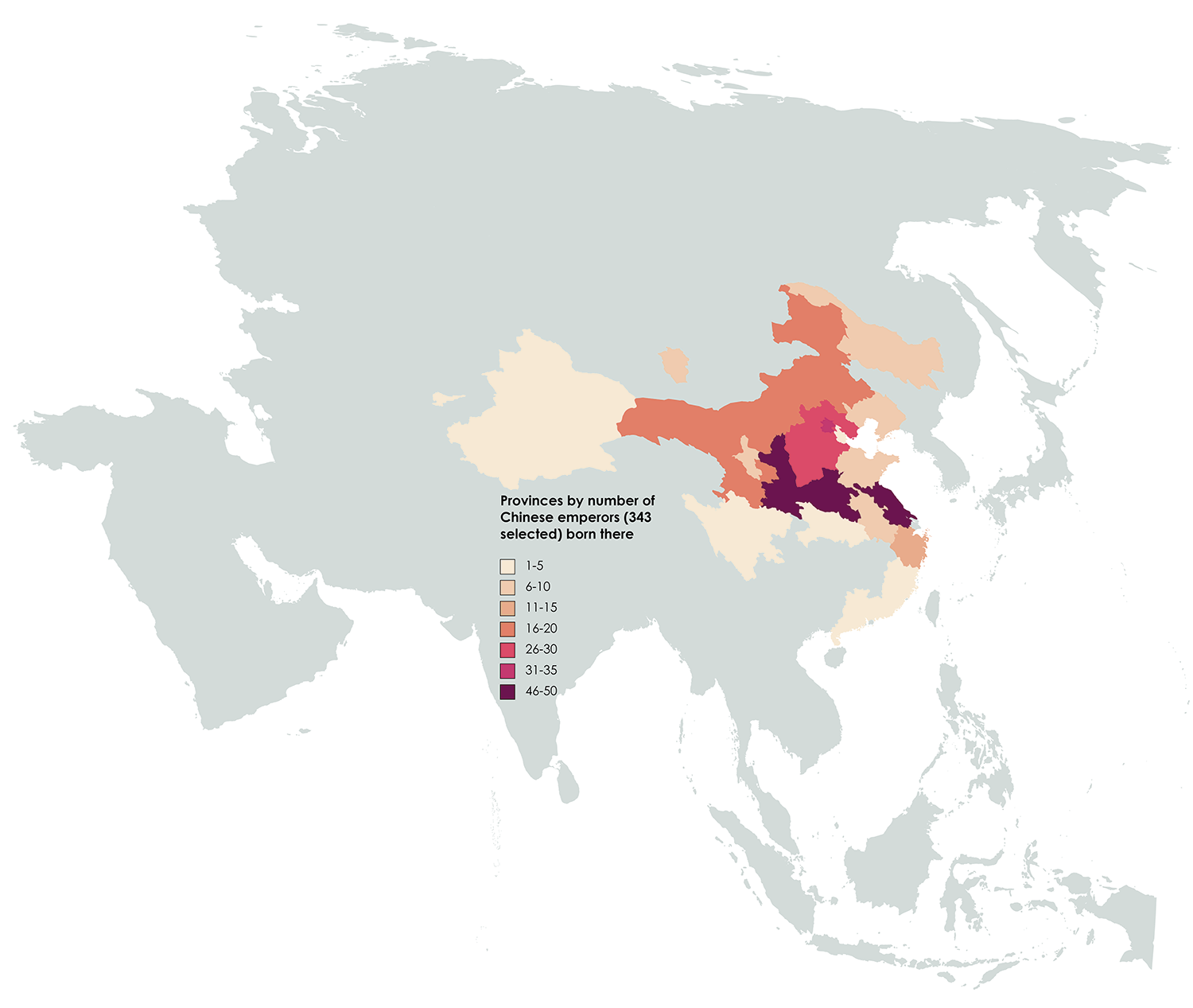

This is a really great map! Is there an updated one that reflects what is happening over the last ten years especially in Africa and Asia?
Unfortunately, I tried but didn’t find an updated map. I totally agree with you, these regions are experiencing huge demographic and economic development changes. Obviously, it is influencing the spread of religion as well. While Europe is experiencing a different process, religious people are becoming fewer and fewer.